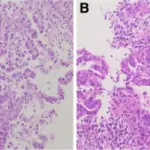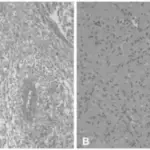Meningiomas are the most common type of primary brain tumors. These tumors originate in the meninges, which are the outer three layers of tissue between the skull and the brain that cover and protect the brain just under the skull.
What is the Pathology of Meningioma?
Etiology: The causes of meningioma include radiation, hormone replacement therapy, and germ line mutations.
Genes involved: Monosomy 22, NF2, TRAF7, AKT1, KLF4, SMO, and PIK3CA.
Pathogenesis: Meningiomas driven by chromosome proliferation of atypical cells.
Histology: The histology associated with Meningioma shows epithelioid cells with round to oval nuclei and streaked cytoplasm. It may contain intranuclear pseudoinclusions. Meningothelial nests or whorls and psammoma bodies.
How does Meningioma Present?
Patients with Meningioma typically are adult females, with age greater than 65 years. The symptoms, features, and clinical findings associated with Meningioma include vision changes, head aches, and weakness.
How is Meningioma Diagnosed?
Meningioma is diagnosed by biopsy.
How is Meningioma Treated?
Meningioma is treated with surgery.
What is the Prognosis of Meningiomas?
The prognosis of Meningiomas is fair.



